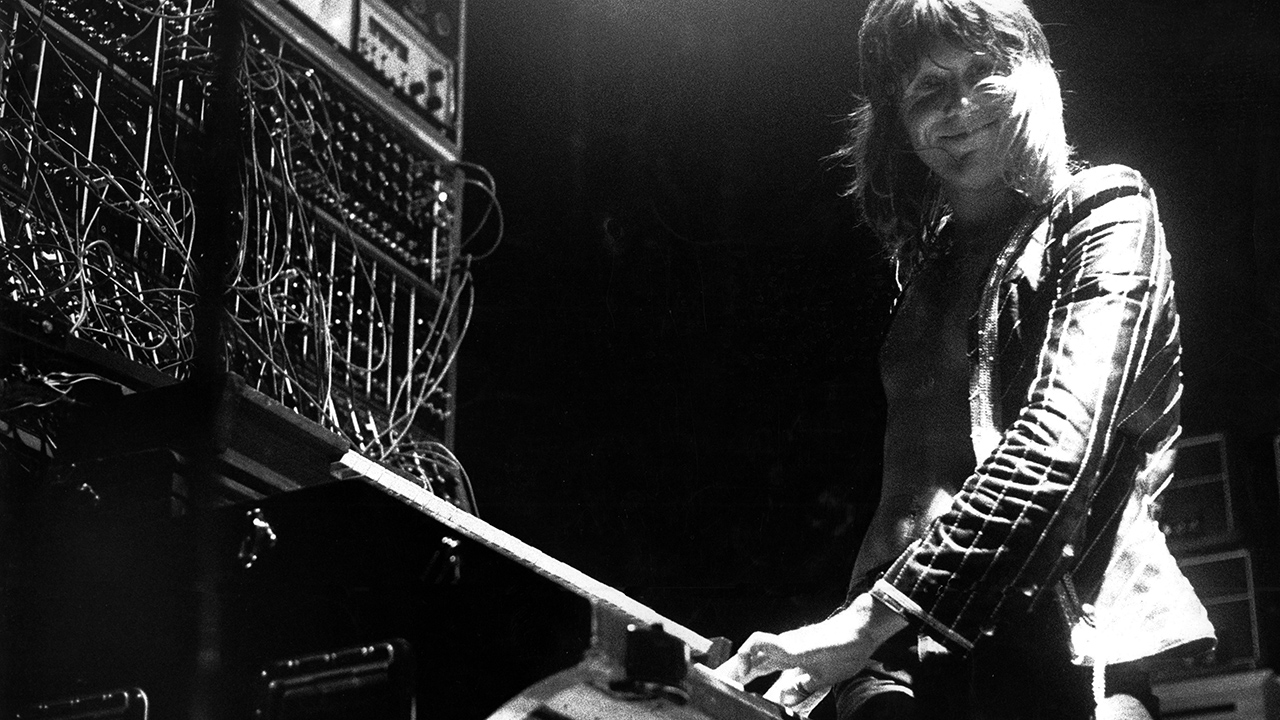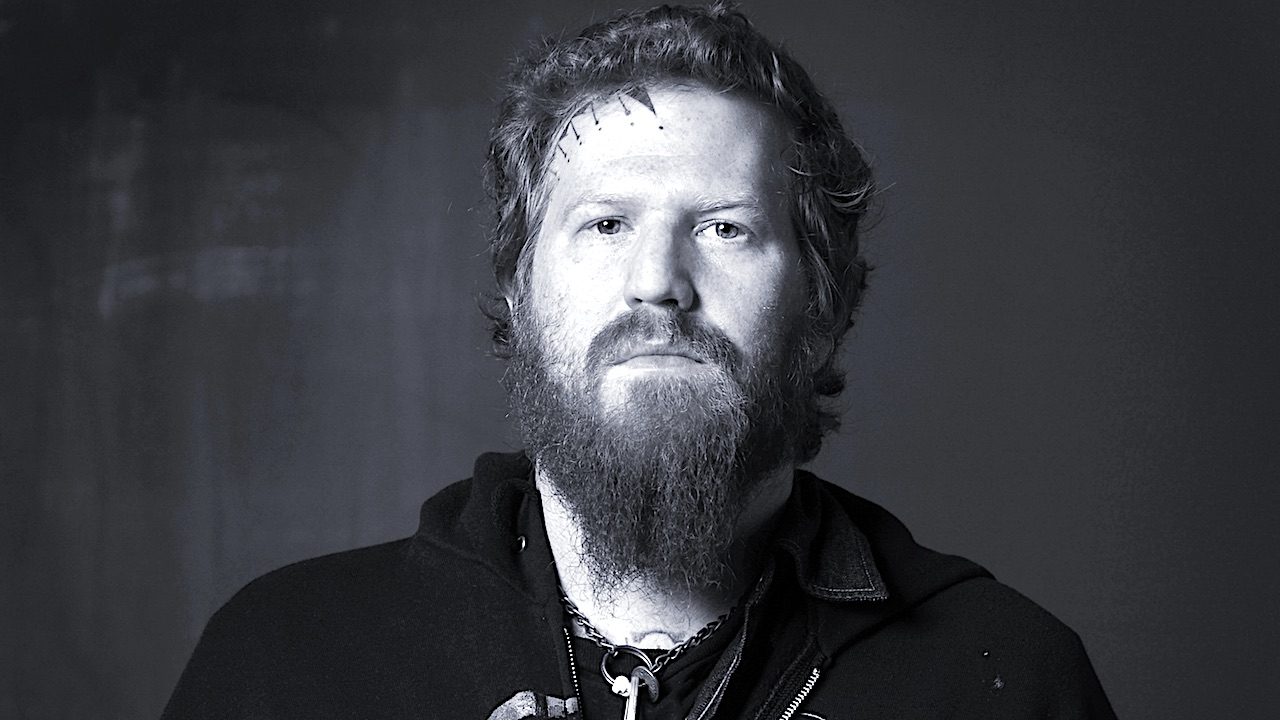“For all his showmanship, he was first and foremost a composer and musician, making music for the head and the heart”: Rick Wakeman, Ian Anderson, Geoff Downes and others pay homage to Keith Emerson
15 classic cuts from the keyboard genius’ career, as loved by the good and the great of prog rock and beyond

Pablo Picasso once said, “Learn the rules like a pro, so you can break them like an artist.” Keith Emerson’s extraordinary career offers a case study in the elegant expression of Picasso’s credo.
Across six decades, Emerson tore down barriers between genres, redefined the image of the keyboard player through his wild onstage performances, and played a pivotal role in the meteoric rise of progressive rock from small British clubs like The Marquee to massive American arena tours.
Prog presents 15 tracks from across his catalogue along with commentary from artists who were influenced by them.
1. The Diamond Hard Blue Apples Of The Moon
From The Nice’s The Thoughts Of Emerlist Davjack, 1968 (Bonus Track)
Ian Anderson, Jethro Tull: “I first heard ...Apples Of The Moon at the Marquee Club in the early months of 1968 when The Nice and Tull were regular resident bands. With the benefit of that original repertoire, The Nice stood out from the usual blues band peers with more complex songs and music arrangements that ushered in the beginnings of progressive rock.
“...Apples Of The Moon is typical of early Nice, and even the later ELP, in drawing upon classical fanfare-like elements. The rhythmic drumming of Blinky Davison in this song inspired the drum part to the early Tull tune A Song For Jeffrey.
“The adventurous and energetic organ playing of Keith Emerson was a sight to behold and given credibility by his obvious pianistic musical skills and academic training. The vocals of Lee Jackson, Blinky Davison’s drumming and Davy O’List’s unusual non-blues guitar style were a great encouragement to me in the months to come to gradually replace the blues-based early Tull with a more original and eclectic mix of musical inspiration.”
Sign up below to get the latest from Prog, plus exclusive special offers, direct to your inbox!
2. Rondo
From The Nice’s The Thoughts Of Emerlist Davjack, 1968
Derek Shulman, Gentle Giant: “I had always loved Keith’s playing in The Nice. It was a complete surprise that they could reinterpret this unusual Dave Brubeck Quartet 9/8 signature classic into a 4/4 rock track and still retain its appeal. This was always something Keith was able to do superbly throughout his musical career with both ELP and his solo works.
“The Dave Brubeck Quartet were, in a sense, a jazz precursor to artists like Frank Zappa, ELP, Crimson and, of course, Gentle Giant. Unusual time signatures and improvisation while still retaining musical accessibility. The Nice were able to pare down Blue Rondo À La Turk to Rondo and still be The Nice.
“Performance-wise, Keith was one of the first keyboard players to actually stand and play brilliantly. He understood that just sitting behind a Hammond organ could be a hindrance to being an entertainer as well as a musician. He was able to use his skills to make the keyboards his foil in the same way that Jimi Hendrix used his guitar. A very rare achievement for a keyboardist.”
3. America
The Nice single, 1968
This explosive arrangement of a showpiece tune from West Side Story was controversial from the start, intended as a critique of violence in the United States following the murders of JFK and Martin Luther King. Then when the band burned a painting of the American flag onstage at the Royal Albert Hall, with the US ambassador in the audience no less, their notoriety was assured.
Tree Stewart, The Emerald Dawn: “I had organ lessons from age 8 to 18 and I thought the organ was a deeply uncool instrument to play. If only I had been shown Keith Emerson when I was young!
“America is a special track for me for many reasons. I was involved in youth theatre when I was a teenager, and I was in the play West Side Story. I was one of the singers and dancers in America so to hear a band take the track and turn it into a political statement with insane theatrics on the organ was a total revelation.
“The theatrics of the live versions of this track also stand out to me. I am a circus and physical theatre performer and teacher by profession, so to see someone jump over their keyboard and swing it about while still managing to play really well is truly incredible.”
4. Intermezzo From The Karelia Suite
From The Nice’s Ars Longa Vita Brevis, 1968
By their second album, The Nice had shrunk from a quartet to a trio, following the departure of guitarist Davy O’List. Emerson was fearlessly exploring the possibilities of melding rock with classical and jazz – the dawn of progressive rock was at hand.
Geoff Downes, Asia, Yes, DBA: “Keith’s treatment of classical music was totally unique. In particular, his early work from The Nice laid the foundations for his incredible career. My favourite album from that period was Ars Longa Vita Brevis, and his interpretation of the Intermezzo from Sibelius’ Karelia Suite really stood out for me.
“It became his signature style in many ways – laying down the main classical theme, and then heading off into his wonderful world of intricate blues and jazzy extemporisation. A true genius.”
5. For Example
The Nice’s Nice, 1969
Mike Keneally: “I’d read about The Nice in Hit Parader magazine, but somehow hadn’t found any of the records, until I was around 11 and I saw a Columbia Special Products repackaging of their third album, simply entitled Nice, with a strange-looking orange cover.
“I found it really thrilling that the song just kept going and going and going – it felt like a gift, a really generous one, and Keith’s organ and piano playing is so on point throughout. For a song essentially based on a blues structure, I was amazed at how many styles were visited during the course of the piece – it’s really adventurous! And there’s horns playing all of a sudden!
“This music also sported a sense of humour that seemed more whimsical than ELP’s usual state of grandeur, and somehow kinder than ELP’s occasional comedy pieces. Keith’s composing and playing imprinted on me hard at that time, and the influence remains – every time I play a sequence of fourths on a keyboard, I can feel him hovering nearby.”
6. Hang On To A Dream
From The Nice’s Nice, 1969
Stephen W Tayler: “The piano immediately caught my attention – the playing and the sound – the strange aspect of the voice, and then the choir! What was I listening to? And then it developed into the whole middle jazz section with that truly spontaneous piano performance.
“It felt like one of the first times for me that such a track became a real journey through changes of style and mood, arriving at a wonderful enigmatic conclusion. It’s a cover of a Tim Hardin song, but a totally unique interpretation with a strange arrangement, great playing, and some very unusual and creative sound treatments.
“Keith and this track encouraged me to be much looser with my approach to music in general, and taught me that elements of bravery, improvisation and experimentation are crucial for great record making. The live version on the Enigma album is much longer and even more crazy!”
7. The Three Fates: Clotho/Lachesis/Atropos
From ELP’s Emerson, Lake & Palmer, 1970
Jo Quail: “I was blessed with an inspiring piano teacher who introduced us to The Three Fates, but at that time I wasn’t familiar with the term ‘prog’; I classed this as ‘contemporary classical,’ and difficult listening at that. It’s only with the grace of years that I have come to truly appreciate Clotho, and my awe of this particular work deepens as my own creativity broadens.
“There are many aspects of Clotho that I return to and that inspire me; to put them broadly, it’s the creative wildness of the composition, the recurring powerful motif of the bass and stacked parallel chords, the surprising change of texture/organ stop and the respite therein, and the cadence points that give weight to the storms that precede them. In the frame of (insane!) chromatic harmony and complex technical virtuosity, Clotho stands alone as the paragon of this realm.”
8. Knife-Edge
From ELP’s Emerson, Lake & Palmer, 1970
Kit Watkins, Happy The Man: “Knife-Edge had a particularly dark and edgy quality that got to me. The organ was the main attraction though, since I was always salivating over distorted Hammond sounds through Leslie speakers, especially the way Emerson voiced his parts. No tremolo!
“Emerson was one of my early influences, especially because of how he merged rock and classical music. Pictures At An Exhibition was a favourite in that regard, but his technique was just so stunning and the music so evocative that I found the mix to be irresistible.”
9. The Barbarian
From ELP‘s Emerson, Lake & Palmer, 1970
Roine Stolt, The Flower Kings: “I remember hearing ELP’s debut album in 1970. A friend of mine had the LP and we listened to it frequently, trying to understand the sounds ELP could make. I liked all of it, the skilful and powerful keyboards and the great fuzz bass sound and voice of Greg Lake on that album and Palmer’s drum frenzy – somewhere in between jazz, classical and Black Sabbath.
“I was aware of Keith already from The Nice but I think the combo of this trio floored me and their more avant-garde meets classical and jazz was just so fresh. Keith’s organ sounds set the standard for many others that came later, including Eddie Jobson, and surely Wakeman and Banks had their ears open.
“Keith was also a phenomenal pianist and pioneering Moog player – and a great showman. One of a kind.”
10. Third Movement, Pathetique
From The Nice’s Elegy, 1971
Rick Pilkington, The Blackheart Orchestra: “When I bought a second-hand copy of Elegy as a 13-year-old guitarist, I had no idea what effect it would have on me. What would I want with an album of organ music?
“Elegy is full of musical energy and ideas. It’s a loaded gun that would pay homage to the past while firing rockets of possibilities into the future. Every note bursting with the 25-year-old Emerson’s overflowing musical virtuosity but all the time walking a tightrope between conformity and outright musical anarchy.
“His recreation of Tchaikovsky’s Third Movement, Pathetique may not be everyone’s favourite Emerson moment but to me it illustrates the crazy, beautiful genius that could hardly contain the music in his young head and hands. It’s a magnificent multicoloured musical explosion...
“In my opinion, The Nice were a starter course – maybe even more tasty than the main course that was soon to follow.”
11. Bitches Crystal
From ELP’s Tarkus, 1971
Nick Beggs: “At about the age of 13 I first heard this track. I thought the whole Tarkus album was great and it was on heavy rotation at my Thursday evening record club where my mates used to bring their vinyl for a spin.
“Looking at it now, it seems strange because it’s just under four minutes, but packs so much into that time. It could have been a single, but Radio 1 would never have played it; the irregular metre makes it spiky. I love the dynamism of the track and the power of the trio churning up the road like a juggernaut.
“Keith’s virtuosity always amazed me. Like so many others who were beguiled by his prowess, I’m sure he’s influenced me on countless levels both conscious and unconsciously.
“’Never a dull moment’ is a cliché, but it’s true. He took every opportunity to expand the harmonic possibilities of a performance but there’s also a very economical use of tasteful single-note signature sounds thrown in as affective motifs on this track.”
12. Promenade / The Gnome
From ELP’s Pictures At An Exhibition, 1971
Theo Travis, Soft Machine: “I think the composition and melody are very strong and memorable. But Keith Emerson is majestic, the way he plays the organ so well – plus he uses other interesting synthesiser sounds that sound like early music and then science fiction, like music of the future. He really was ahead of his time and had not just skill but such authority about his playing.
“Mussorgsky is a great composer and this is a fine work, so that aspect of the composition is already taken care of; but I love the way ELP totally own it. They add their own thing and reinvent the piece with flair, style and confidence. The arrangement is really clever, showcasing each individual performer – and when they play together they use the instrumentation imaginatively and to the max.
“They were such great performers too. It’s thrilling watching an old Keith Emerson performance, playing the organ upside down while having it lie over him and using knives to wedge down specific keys. He took the Hendrix thing and translated it to keyboards. Very exciting!
“This performance on Pictures At An Exhibition – the playing, the atmosphere and the fact that it was so in tune with the times – contribute hugely to its magic.”
13. Nut Rocker
From ELP’s Pictures At An Exhibition, 1971
Nut Rocker was an arrangement of Tchaikovsky’s march from The Nutcracker that topped the UK singles chart in 1962 for B Bumble And The Stingers, before ELP adopted it into their live repertoire.
Rick Wakeman: “It was the summer of 1962 and I heard it in Woolworths in Exmouth, Devon, and I used up all my holiday money to buy the single – thus forgoing an ice cream for a day. The piece was well arranged and well played by B Bumble And The Stingers, although they were session musicians. As soon as I got home from holidaying in Exmouth with my parents, I learnt it – it was just great fun to play. In later years I wanted very much to record it, but Keith beat me to it.
“Although Keith was far more jazz-orientated than I was, and I think the best at the way he fused jazz into the various genres of music he played, we both had a lot of the same influences, such as Jimmy Smith, and we both liked fun pieces. Hence, Hoedown and Nut Rocker, both tremendous stage pieces and so well-suited to Keith’s flamboyance.”
14. Trilogy
From ELP’s Trilogy, 1972
Mike Stobbie, ex Pallas: “Keith was trailblazing and giving all the guitar soloists a run for their money. Trilogy is a keyboardist’s dream; it shows off Keith’s phenomenally beautiful virtuosity and his playing is second to none. Simply irresistible to listen to and I love playing it – it’s stuck with me for decades.
“The song part itself has a very rich and powerful melody with Greg’s wonderful voice and the beautiful classical piano playing at the beginning draws you in until it erupts into total excitement. To shoot off into that Moog synthesiser section over complicated rhythms followed by jazz-influenced distorted Hammond organ... well, it has everything I could ever want.”
15. The Endless Enigma
From ELP’s Trilogy, 1972
Jonathan Edwards, Panic Room, Luna Rossa, Three Colours Dark: “The Endless Enigma has all of the elements that make ELP’s music so compelling: Keith’s lyrical and virtuoso piano playing, particularly in the Bach-influenced Fugue that breaks up the two sections of the piece; the Hammond work that goes from delicate to muscular as the music demands driving the song forward; and the innovative Moog playing that features both in solo lines and as layered textures to produce synthesised fanfares in the end section.
“But what’s striking here too is that, contrary to common opinion, it’s never showy or complex for the sake of it. Every keyboard phrase, bass line or drum fill is there to support the music. For all his showmanship, Keith was first and foremost a composer and a musician, making music for the head and the heart.”
After starting his writing career covering the unforgiving world of MMA, David moved into music journalism at Rhythm magazine, interviewing legends of the drum kit including Ginger Baker and Neil Peart. A regular contributor to Prog, he’s written for Metal Hammer, The Blues, Country Music Magazine and more. The author of Chasing Dragons: An Introduction To The Martial Arts Film, David shares his thoughts on kung fu movies in essays and videos for 88 Films, Arrow Films, and Eureka Entertainment. He firmly believes Steely Dan’s Reelin’ In The Years is the tuniest tune ever tuned.

